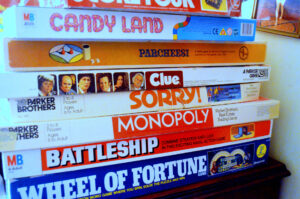April 13, 2023
 Your station’s ratings can be a source of joy or sorrow. Let’s say your station garners an older-skewing demographic – one that likely has a large portion of Adults 55+ (or even 65+). Your clients want Adults 18-49 or 25-54. What do you do?
Your station’s ratings can be a source of joy or sorrow. Let’s say your station garners an older-skewing demographic – one that likely has a large portion of Adults 55+ (or even 65+). Your clients want Adults 18-49 or 25-54. What do you do?
Read More…
April 6, 2023
 As you are likely aware, we specialize in analyzing Nielsen data for radio stations across the country. We have been doing so for over 30 years. For many of our clients, we are not The Ratings Experts, we are the ratings whisperers. In short – we help programmers know their numbers.
As you are likely aware, we specialize in analyzing Nielsen data for radio stations across the country. We have been doing so for over 30 years. For many of our clients, we are not The Ratings Experts, we are the ratings whisperers. In short – we help programmers know their numbers.
How do we do this? Is it alchemy or legerdemain? No, it is with something we have dubbed The Programming & Ratings Toolbox. “What is that?” you say? It contains the following elements – all designed to gain a deeper understanding of your station’s Nielsen data. Read More…
March 30, 2023
 Happy Opening Day everyone! With all the analysis of the new rules, I’ve been thinking about how radio can learn from our great pastime. I am a huge Washington Nationals and MLB fan, and I understand the intent of all the new rule changes. The pitch clock, bigger bases, no defensive shifting, and others are supposed to help quicken the “pace of play” and increase offense. Looking at the Spring Training numbers, they do seem to be working. Everyone in the sport is excited about them.
Happy Opening Day everyone! With all the analysis of the new rules, I’ve been thinking about how radio can learn from our great pastime. I am a huge Washington Nationals and MLB fan, and I understand the intent of all the new rule changes. The pitch clock, bigger bases, no defensive shifting, and others are supposed to help quicken the “pace of play” and increase offense. Looking at the Spring Training numbers, they do seem to be working. Everyone in the sport is excited about them.
I could see younger players adjusting quicker since rules are always being tinkered with in the minor leagues. I’m surprised though that even veterans are on board. “I love it … I can totally dictate pace.” said future hall-of-famer, and former Nats great, Max Scherzer about the pitch clock. As intimidating as he is, I wouldn’t want him to know I’m disagreeing with him, but sorry Max, I am. To me, the new rules seem not only impulsive but baseball also seems to be changing too much all at once. Radio should take a page out of baseball’s book, but then ball it up and shoot it into the trash can. Oh wait … wrong sport.
Read More…
March 23, 2023
 As The Ratings Experts, we’re well-versed in the language of Nielsen. We not only know the numbers, we also know where to mine for the nuggets that can reveal why your station is healthy (or not).
As The Ratings Experts, we’re well-versed in the language of Nielsen. We not only know the numbers, we also know where to mine for the nuggets that can reveal why your station is healthy (or not).
However, if you work your way through the fog of war, you’ll find that your ratings are dependent on one metric – Average Quarter Hour (AQH). Everything is dependent on this number … Read More…
March 16, 2023
 Streaming now represents 20% of AM/FM radio listening, according to Edison Research’s quarterly “Share of Ear” Q4 2022 study. Did you know this? Are you prepared with the facts to fight perceptions that Pandora and Spotify reach more people or garner a larger “share of ear”?
Streaming now represents 20% of AM/FM radio listening, according to Edison Research’s quarterly “Share of Ear” Q4 2022 study. Did you know this? Are you prepared with the facts to fight perceptions that Pandora and Spotify reach more people or garner a larger “share of ear”?
Read More…
 Your station’s ratings can be a source of joy or sorrow. Let’s say your station garners an older-skewing demographic – one that likely has a large portion of Adults 55+ (or even 65+). Your clients want Adults 18-49 or 25-54. What do you do?
Your station’s ratings can be a source of joy or sorrow. Let’s say your station garners an older-skewing demographic – one that likely has a large portion of Adults 55+ (or even 65+). Your clients want Adults 18-49 or 25-54. What do you do?



